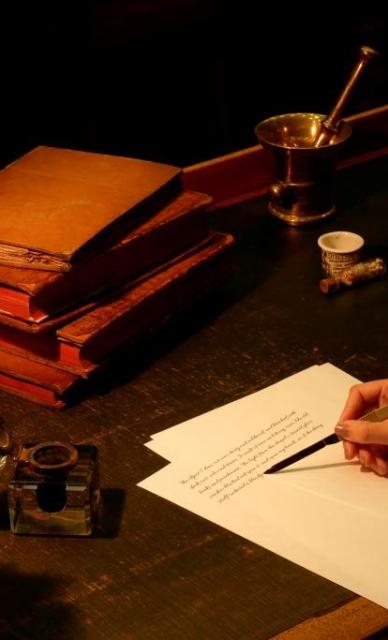Physicians' Gallery Newsletter
Updates on upcoming events, exhibitions and online stories
In the 1600s and 1700s support from important patrons was crucial for medical professionals and an important feature of the medical profession. Especially in Edinburgh, where the medical marketplace was intensely competitive and official posts were limited it was very important to have connections in order to become successful.
At the start of the 1800s, however, patronage began to be seen unfavourably as a symbol of past times. Medical biographies began to play down the role of patrons in the lives and careers of medical professionals. In place of patronage, public service began to be emphasised as a demonstration of the moral character of the physician. Service to hospitals, medical institutions, the crown and the army were all celebrated as selfless, virtuous acts committed for the benefit of the public. Public service came to be seen as a reflection of a medical man’s moral character. This transition from the strong and open role of patrons in a man’s career to an emphasis on his humanitarian work can be seen in the representation of the medical practitioners in this collection.
James Drummond, the Fourth Earl of Perth (1648–1716). He was an ambitious politician and by the end of the 1670s was actively involved in Scottish politics. In 1678 he became a member of the Scottish Privy Council. Perth and his brother, Lord John Drummond (1649–1714), attached themselves to the interests of the Duke of York, who was sent by Charles II to govern Scotland.
He was an instrumental patron involved in the foundation of the Royal College of Physicians of Edinburgh, which was granted its charter by Charles II in 1681. The College was established in order to license and incorporate practicing physicians in Edinburgh. The powerful position of his family and his connections to other influential families is clearly emphasised in this portrait.

William Hunter (1718–1783) was a physician, anatomist, and man-midwife born in Lanarkshire. Hunter studied at the University of Glasgow but left before he had graduated. He became an apprentice to William Cullen. In Edinburgh Hunter attended the anatomy lectures of Alexander Monro Primus. In 1740 Hunter travelled to London to study midwifery under William Smellie. In 1741, Hunter became the anatomy assistant to James Douglas.
Hunter was considerably involved in links of patronage and was aware of the benefits influential relationships could bring him. He cultivated polite manners and personal characteristics that granted him access to prominent members of society. His patients included the Pitts, Hertfords, Lady Ossory, the Fitzroys, the Earl of Sandwich, Lord North, the Coutts, and the Hollands. ‘I have’, he wrote, ‘the pleasure of thinking that every soul of my acquaintance wishes me well and would be ready to serve me’.

This is an Honorary Diploma of the Royal Jennerian Society awarding membership to Edward Knowles Esq. The Royal Jennerian Society was established by Edward Jenner (1749-1823) in 1803. The aim of the society was to vaccinate the general public against smallpox. A statue of Jenner stands to the left of the print above a picture of a milkmaid milking a cow, as it was through an investigation of cowpox that he made his discovery.
Although this is not technically a medical portrait it is interesting as it lists the patrons of the society, including Astley Cooper, Benjamin Travers , William Babington, Matthew Baillie, and Everard Home. Although it became less fashionable during the 1800s to advertise the patrons of medical professionals in their bibliographies the importance of networks of patronage and support is shown here.

Sir Jeremiah Fitzpatrick (c. 1740-1810) was a physician born in Kilbeggan, Westmeath. Little is known of his life, family, and education possibly due to his Catholic background. Inspired by John Howard's State of the Prisons in England and Wales (1777) and demands for prison reforms in Ireland he became a prison physician and an influential campaigner for prison reform. He began investigating the ways military authorities could reduce health problems such as outbreaks of disease in 1780 and four years later, he was given the post of Inspector of Health for the Land Forces. His public work for humanity was acclaimed in 1782 when he was knighted and the next year he was honoured as the primary witness called before the parliamentary committee established to inquire into the state of prisons.
Few images make reference to the groups which benefitted from the work of the medical professionals depicted. This image indicates the specific public services improved by Fitzpatrick, for prisons, orphans, widows, and the army. This exemplifies the trend to emphasise humanitarian work instead of patronage or family connections, which developed in this period.


Physicians' Gallery Newsletter
Updates on upcoming events, exhibitions and online stories